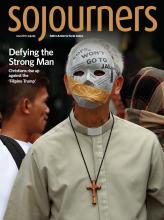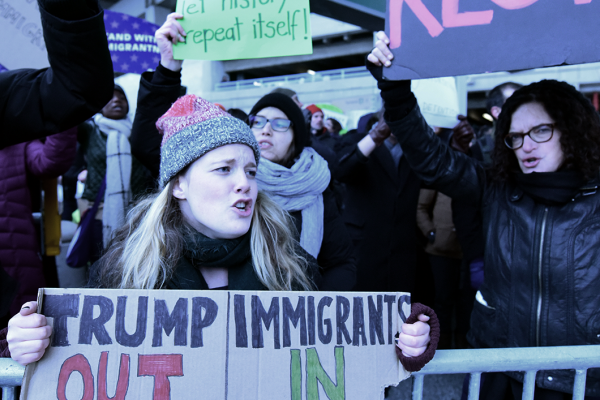OUTSIDE, A HELICOPTER circles this D.C. neighborhood, a dog barks anxiously in the alley. Inside, a woman sits in a straight-backed chair reading the Beatitudes. She adjusts her glasses. “Bienaventurados los que lloran, porque ellos recibirán consolación.” Blessed are those who mourn, for they will be comforted. “It’s a beautiful prayer,” she says.
My neighbor Lola cleans office buildings during the week, takes English classes on Saturdays, goes to Mass on Sundays. Her husband operates a jackhammer for a construction crew. On the “Day Without Immigrants,” Lola’s boss said because it wasn’t organized by the union, workers should not stay home. So she went to work. Her husband stayed home. “We have to stand together,” he said.
Lola and her husband sometimes share their one-bedroom apartment with a man who was their neighbor in El Salvador. He works days, nights, weekends. He sleeps on a mattress in their main room for a few hours in the afternoon. Lola leaves pupusas for him, wrapped and warm. Sometimes he drinks too much, turns up the radio, dances. They quiet him so he doesn’t disturb the neighbors. He feels safe there.
Read the Full Article

